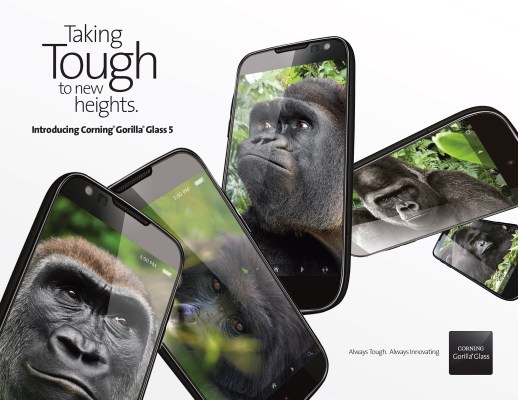Corning has managed the remarkable feat of making smartphone glass – if not sexy exactly, at the very least compelling. Smartphone makers tend not to go out of their way when it comes to talking up third-party component manufacturers, but name-checking Gorilla Glass has become common practice at product unveils, a sort of shorthand for a company’s commitment to making their devices more, well, life-proof.
After all, most of us have likely witnessed the fragility of our mobile devices first-hand. The difference between pristine and spider web shards is one ham-handed fumble above the pavement. Earlier this year, Corning announced that its Gorilla Glass technology has been employed on 4.5 billion devices thus far.
During a call earlier today, SVP Jim Steiner added that the shipments currently amount to around one billion devices per year. The number will likely grow as the company rolls out Gorilla Glass 5, two years after announcing its predecessor. The focus of this latest version of the screen technology is, naturally drop testing.
“We recently did a survey, and it’s fairly obvious that everyone drops their phone. We find that the average height is over a meter high,” explained Steiner. “Based on our internal data on drop events, our data shows that Gorilla Glass 5 outperforms 4 by 1.8-times.”
Failure in terms of Gorilla Glass entails any manner of cracking, dropped for a height of 1.6 meters (above the arrive drop height of most users). The improvement is due to both a change in the materials that make up the glass, as well as the chemical used to strengthen it.
The scratch resistance, on the other hand (which is measured by sticking a phone in a purse inside of a spinning barrel), is roughly on-par with version 4, according to the company. The new glass is available now for manufacturers. Products utilizing the technology will start popping up this quarter.
For the time being, the company is keeping versions 3 and 4 available to manufacturers at a lowered price point, but will likely start to wind down the former in the near future.
